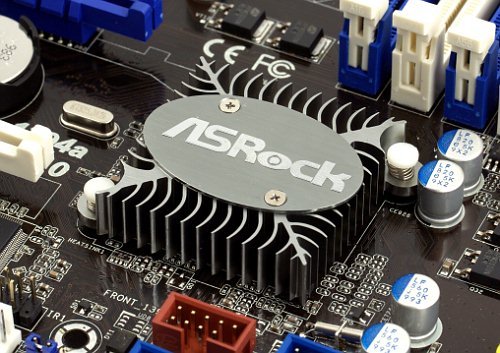The inexpensive chipset Intel H55 didn't become an industry milestone. However, it attracted motherboard manufacturers willing to make affordable models with sufficient average functionality and full-fledged support for the graphics built into Intel's new processors. The reduced selling price came in handy as well. It's interesting that ASRock, an expert in affordable solutions, liked the chipset so much that they made a surprising motherboard H55 Pro that didn't use integrated graphics features. Though justified economically, it was still quite original.
Today, we're going to review a more ordinary solution, H55M Pro. Consider it a counterpart of the microATX P55M Pro, just based on the H55 chipset. H55M Pro is not the lowest-end solution in its series, but it's still quite affordable. Let's see whether ASRock was successful in balancing out price and features.
Design
ASRock H55M Pro is company's only motherboard of the new series that has the standard width. All other microATX models feature narrower PCBs, since no one demands much expandability from inexpensive solutions. It's interesting what they have had to sacrifice while designing H55M Pro. The motherboard has space for FireWire, 4 memory sockets and even for a full-fledged 8-pin CPU power connector. However, ASRock sacrificed FDD and, quite unexpectedly, IDE. The company had never gone this far, even in its top-class motherboard, but in this case there wasn't enough space. Finally, the oddities are crowned by COM and LPT headers on the PCB. Go figure.
Except for the aforementioned peculiarities, the layout is pretty much ordinary. The chipset features are implemented almost completely. So, when we see that the second PCIe x16-sized slot is actually connected to four PCIe lanes of the Southbridge (i.e. PCIe 1.1), we know that this is a limitation imposed by the Intel's chipset. Of course, this motherboard won't provide you with SLI, CrossFire, or whatever. But it does offer good support for graphics integrated into the lower-end Core i5/i3 and Pentium G processors. The eSATA port is implemented in the low-cost way -- by means of the chipset port. But it is Powered eSATA nevertheless. In other words, don't let the low price of this motherboard deceive you. In terms of features, H55M Pro is a decent mid-end product. Its drawbacks are familiar and excusable: installation may be somewhat complicated, because some slots and connectors are too close to each other.

The CPU VRM has 4+1+1 phases: 4 for core, 1 for uncore (memory controller included), and 1 for the integrated graphics. Each single-phase power converter, including memory modules converter, has 4 MOSFETs. The CPU power circuitry features 2 MOSFETs per phase. This is a standard scheme for inexpensive motherboards. If you're into overclocking you should probably consider another motherboard. However, H55M Pro uses only high-quality Japanese polymer capacitors by Nichicon, which is nice.
As you can see, ASRock preferred simple cooling in this case. The chipset is covered by a heatsink, while CPU power converter is not cooled at all. However, we have already stated that Socket 1156 motherboards based on low-power chipsets have no cooling issues, given there are enough MOSFETs in CPU power circuitry. If you make sure that the CPU cooler drives air towards the rear panel, you may forget about additional cooling at all.
The CPU PWM controller of H55M Pro dynamically disables inactive phases depending on load. ASRock's implementation allows you to enable the proprietary Intelligent Energy Saver feature (IES) from both Windows and BIOS. In the latter case you won't have to run the Windows utility. Well, unless you want to monitor the PWM controller state.
The motherboard doesn't have any other peculiarities. Maybe just the Combo Cooler Option (CCO) that lets you install Socket 775 coolers onto ASRock H55M Pro. Note that you'll have to rotate it a bit relative to the standard Socket 1156 mounting holes. Speaking of prorietary utilities, there are only a few: the aforementioned IES and OC Tuner intended for monitoring and overclocking. However, company's marketing department comes up with new ideas which are quite, umm, original. We're talking about OC DNA that lets you share BIOS settings with your friends.
Write a comment below. No registration needed!

